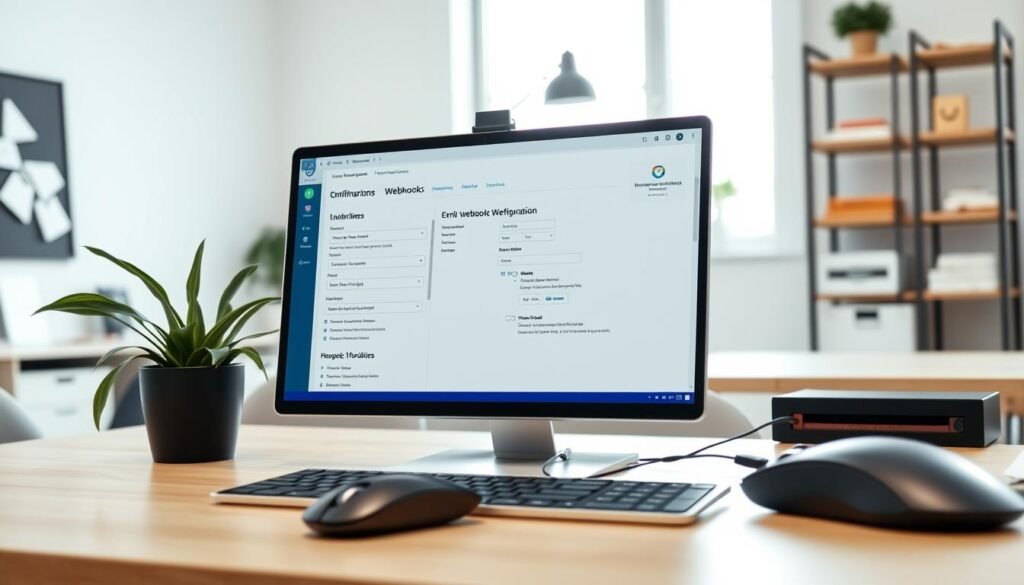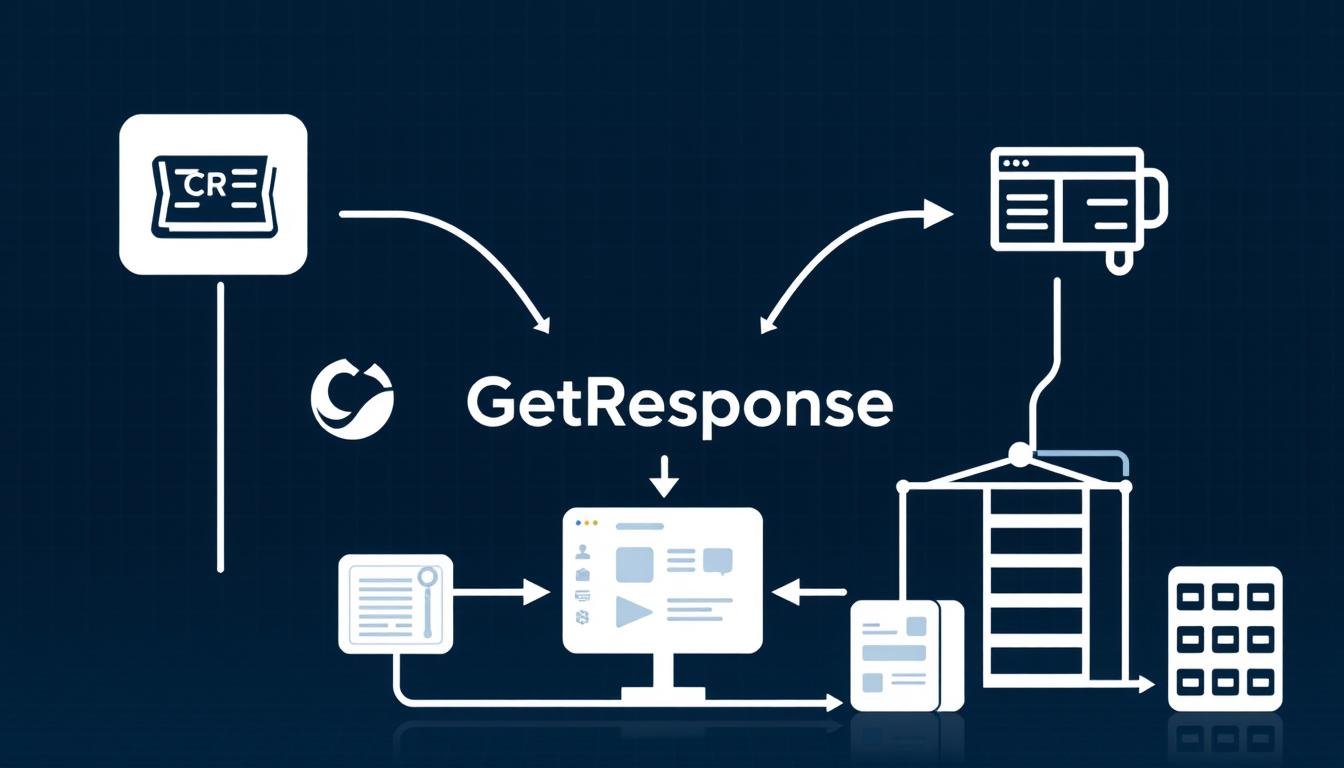Connect campaign events with persistent customer profiles so your teams see real-time signals and act fast.
This guide walks you through a practical plan that moves event payloads into a unified data platform and keeps profiles ready for activation.
You’ll learn where to configure a webhook, which events to select, and when to enable batching for high-volume sends. The setup sends instant HTTP payloads for events like opens, clicks, subscribes, and bounces.
We also cover identity resolution, consent management, and how to model customer data so marketers can build audiences with confidence. Along the way you get engineering best practices for secure ingestion, retries, and idempotency.
By the end, you will have a clear path to load normalized payloads into a cdp and data platform, activate audiences across channels, and tie outcomes to analytics.
Key Takeaways
- Set the integration endpoint and choose events to stream precise customer events.
- Enable batching for scale and preserve attribution for analytics.
- Model and normalize payloads before loading into the data platform.
- Implement signature validation, retry logic, and idempotency for reliable ingestion.
- Resolve identity and manage consent so profiles stay accurate and activation-ready.
Why connect GetResponse webhooks to your CRM, CDP, and data warehouse today
Real-time event streams let your marketing and analytics teams act on campaign signals the moment they happen. Instant delivery reduces lag and shortens the path from engagement to activation, so you capture more value from each interaction.
Present-time benefits are immediate: live data speeds audience builds, improves testing cadence, and raises ROI. When events land in your cdp and platform quickly, dashboards show current responses and teams can iterate on campaigns the same day.
Connecting these systems also solves data silos. A unified single customer view merges behavioral, transactional, and profile records. That consolidated customer data improves segmentation and powers better customer experience across channels.
- Real-time data reduces delay between engagement and activation.
- Removal of data silos aligns your tech stack so marketers and analysts share one truth.
- CDP capabilities let your platform activate journeys without manual prep.
- Live analytics produce faster feedback, enabling better experiences and measurable gains.
How webhooks work in GetResponse and what events to stream
When configured, event triggers send payloads straight away, posting object-level information to the destination URL you register. This eliminates polling and keeps your data fresh for analytics and activation.
Core delivery is immediate: message opened and link clicked arrive as separate event payloads so your platform can update campaign metrics and customer records without delay.
- Engagement — Message opened, Link clicked, SMS link clicked (MAX).
- Lifecycle — Contact subscribed (not imports), Contact moved, Contact unsubscribed.
- Profile hygiene — Custom field changed (not imports), Contact import finished, Email changed.
- Deliverability — Bounced contact removed to protect sender reputation downstream.
Enable batching when campaigns drive high throughput. Batching reduces request overhead by grouping multiple events into one HTTP call, improving throughput while adding a small delay. Balance latency and scale, and include correlation IDs and original timestamps so event ordering and attribution remain intact.
Planning your data model for CRM, customer data platform, and warehouse
Design a data model that turns scattered event signals into stable, actionable customer records. Start by organizing first-party customer data into persistent profiles that are easy for teams and tools to use.
Model contacts as the core entity. Use stable identifiers (email, hashed email, vendor ID) and keep current plus historical attributes so profiles support both activation and analytics.
Store events in an immutable, time-stamped fact table. Key events—opens, clicks, subscribes, unsubscribes, bounces—should reference profile IDs for reliable joins and analytics.
Designing schemas for contacts, events, and campaign metrics
- Reference table for campaign metadata (campaign, message, subject, channel) to standardize attribution across platforms.
- Field dictionary with names, types, and descriptions so sources map cleanly with minimal transforms.
- Consent and preference fields with effective dates embedded in profiles for compliant management and targeting.
Aligning fields across systems for easy third-party access
Normalize enumerations and implement surrogate keys for profiles and campaigns to decouple your schema from any single system. Provide curated views for marketers and analysts so they can use data without wading through raw tables.
Version your schemas and document lineage from sources to marts. Communicate changes in advance so integrations remain reliable and consumers trust the data.
Identity resolution and consent strategy for unified customer profiles
Define a deterministic graph that ties online signals and offline transactions into a single identity. This gives you a reliable backbone for persistent profiles and accurate customer data use.
Mapping identifiers across online and offline sources
Map email, contact IDs, CRM IDs, device IDs, and website cookies into linked records. Use POS loyalty IDs and phone numbers for offline joins once consent is present.
Timestamp each linkage so you can audit when merges happened and trace attribution across systems.
Persistent profiles: linking behavior, transactional, and demographic data
Combine behavior like opens and clicks with transactions and demographics into persistent customer profiles. Keep historical relationships when an email changes and prevent collisions from recycled addresses.
Consent, preferences, and governance considerations
Store consent as a first-class attribute with scope, source, and expiration. Sync preference centers so updates flow in near real time and marketers see current settings.
- Keep deterministic matching authoritative; use probabilistic enrichment only under policy controls.
- Protect PII with role-based access and masked views for analysts and activation tools.
getresponse webhook to crm cdp warehouse
Here we summarize a lean pipeline that moves instant event signals into persistent profiles and reporting layers. This gives your teams live customer information and a fast path for activation.
Start small and prove value. Forward core events—opens, clicks, subscribes, bounces—and record them against stable profile IDs. That minimal integration unlocks immediate gains for analysts and marketers.
As you scale, route raw payloads into a cdp where enrichment and deduplication happen. The cdp exposes unified customer profiles and streams curated views into a data platform for analytics.
- Fast wins: quicker audience refresh, timely triggers, and simpler list management.
- Scale path: move from direct forwarding to staged pipelines with enrichment and transformations.
- Reliability: isolate errors so platforms and cdps keep serving reliable records when one source fails.
Instrument lean metrics first, then add governance and security checkpoints. Assign ownership across engineering, analytics, and marketing so implementation stays efficient and accountable. For a comparative setup guide, see GetResponse vs Marketo for enterprise.
Step-by-step: configure GetResponse webhooks

Begin configuration with a clear name and a test URL. Use an HTTPS endpoint your engineering team controls and validate payloads in a non-production website environment before flipping live.
Navigate and create the listener
Open Webhooks in the console and click Create webhook. Enter a descriptive Webhook name and paste the Webhook URL that maps to your ingestion service.
Pick events, activate, and consider batching
Select events your platform and cdp need: Message opened, Link clicked, Contact subscribed, Contact moved, Contact unsubscribed, Custom field value changed. Also include hygiene events—Contact import finished, Contact’s email changed, Bounced contact removed—to keep customer data accurate.
Set status to active and confirm your endpoint returns a 2xx response. Enable batching when campaigns generate high volume; this lowers request overhead while preserving delivery ordering via timestamps and correlation IDs.
Edit or remove listeners via Actions
Maintain a registry with name, URL, events, and status in your integrations runbook. If you need a change, open Webhooks, hover Actions (vertical ellipsis), then Edit or Delete without disrupting other integrations.
- Test on staging, log payloads, and verify field mappings across sources.
- Use environment credentials and IP allowlists to protect the platform during promotion.
- After activation, confirm downstream customer profiles update in your CRM and cdp for end-to-end validation.
Build a secure, resilient ingestion endpoint
Treat incoming event streams like critical infrastructure: authenticate, validate, and design for safe retries. Your endpoint must accept event payloads reliably while protecting customer information and preserving order across processing.
Validate signatures, authenticate requests, and handle retries
Terminate TLS and verify any shared secrets or signatures so only authorized platforms deliver data. Require short-lived credentials and IP allowlists for higher assurance.
Implement exponential backoff for retries and route persistent failures to a dead-letter queue. Alert on repeated delivery errors so management can act before data loss accumulates.
Design for idempotency, ordering, and error handling
Use event_id as an idempotency key and store dedupe state to avoid duplicate customer updates during retries. Shard processing by a stable identifier so ordering for a single customer remains intact.
- Schema validation: reject malformed payloads with clear error codes and structured logs.
- Rate limits & circuit breakers: protect downstream cdp and platform loads during bursts.
- Encryption & access controls: encrypt sensitive fields at rest and restrict decryption to minimal services.
- Observability: emit metrics (requests, latency, errors), trace IDs, and structured logs for rapid triage.
- Resilience: use blue/green deploys and an on-call runbook for common failure modes.
In short, authenticate every request, make operations idempotent, preserve per-customer order, and instrument aggressively. These steps keep customer data accurate and your integrations dependable over time.
Normalize, enrich, and load data into your CDP and warehouse
Start by mapping incoming events into a single canonical schema so every team reads the same columns. Normalize event names and field types from each source. This step makes downstream analytics reliable and reduces transformation work later.
Integration, organization, and identity resolution in practice
Standardize timestamps to UTC and keep both event and processing times. Enrich events with campaign metadata, account context, and website attribution to increase activation value.
Resolve identity before merges. Use stable identifiers and idempotency keys so profiles remain accurate when emails or device IDs change.
Deduplication and data quality checks before activation
Deduplicate by idempotency keys and customer identifiers before writes. Run automated checks for null rates, enum validity, and referential integrity to profiles. These controls stop inflated metrics and broken segments.
- Load curated events and profile updates with upsert logic so segments refresh promptly.
- Mirror curated layers into your analytics schema so analysts can query without extra transforms.
- Schedule micro-batches for platforms that accept batch loads to balance latency and compute.
Keep lineage from each data source to curated models and expose governed views for marketing tools. With clear management and trusted profiles, your teams can use customer data for activation and analytics with confidence.
Activate data across channels from your CDP and CRM

Turn unified profiles into action by routing curated audiences into live channels and ad platforms. Use recent opens, clicks, and purchases to build segments that deliver relevant experiences across channels.
Use cases include personalization, product recommendations, and dynamic website content that reflect real-time behavior and inventory.
- Build audience segments from fresh customer data for targeted campaigns and tailored experiences.
- Personalize email and website content with product recommendations driven by behavior and stock levels.
- Apply predictive scoring to prioritize high-intent customers and trigger sequenced campaign flows.
- Retarget lapsed customers with lookalikes and paid media informed by platform profiles.
- Orchestrate omnichannel automation that adapts cadence and channel according to response and consent.
- Use AI-led send-time optimization and next-best-channel to boost engagement and customer loyalty.
Continuously test creatives and frequency, feed conversions and churn back into models, and measure lift via holdouts and multi-touch analytics. Empower marketers with self-serve audience builders and governance so teams move fast while keeping data quality and compliance intact.
Analytics, dashboards, and measuring time to value
Measure how event-driven signals translate into revenue and engagement across your marketing stack. Focus dashboards on outcomes and operational health so teams see progress fast.
Start with clear hypotheses: map which events should drive audiences, revenue, or churn prevention. Track time from event receipt to audience update as an early success metric.
Attribution across campaigns and channels
Use multi-touch attribution models that credit each touch across channels. This reveals how customers interact across email, ads, and owned channels.
- Standard KPIs: engagement rate, conversion rate, time-to-first-activation.
- Drill-down: feed curated customer data into BI tools for program-to-person paths.
- Experiment: run holdouts and incrementality tests to prove causation.
| Metric | Purpose | Source |
|---|---|---|
| Time-to-audience update | Operational health / time to value | Ingestion logs & cdp |
| Attribution credit | Campaign ROI and channel mix | Event stream + analytics |
| Deliverability & unsubscribe rate | List quality and sender reputation | Message events and reporting |
Publish self-service reports for marketers and add anomaly detection to flag sudden shifts in event volumes or open rates. Finally, push analytics insights back into your cdp audiences so campaigns improve continuously.
Monitoring, scaling, and maintaining your integration
Track end-to-end delivery and processing metrics so operations meet SLAs and marketers trust the audiences they build.
Start with observability: record request rates, success/failure ratios, and total lag from receipt until records land in your platform and customer data store.
Observability for throughput, lag, and failures
Alert on error thresholds, schema validation failures, and drops in event information from sources. Use dashboards that show recent throughput and per-minute error spikes.
Scale horizontally with stateless ingestion services and managed queues. That design handles bursty traffic during major sends and keeps processing stable.
Versioning payloads and evolving data contracts
Employ payload versioning and formal data contracts. Announce changes, provide deprecation windows, and support dual-write during migrations.
- Use canary deployments and feature flags to reduce blast radius when changing enrichment logic.
- Schedule backfills and keep replay tools that preserve ordering and idempotency for missed windows.
- Rotate secrets, audit access controls, and run quarterly capacity tests aligned to peak events.
| Metric | Action | Owner |
|---|---|---|
| Throughput (req/sec) | Auto-scale ingestion; alert on sustained saturation | Platform ops |
| End-to-end lag | Investigate slow transforms; prioritize critical paths | Data engineering |
| Error rate | Trigger rollback or canary pause; open incident | SRE / Integrations |
Maintain a change log that records versions, owners, and rollback plans. Publish status pages and freshness indicators so marketers can plan sends and use audiences with confidence.
Conclusion
Wrap up: connect event streams so raw engagement becomes timely, actionable signals across your stack.
Start lean—validate that event delivery updates unified customer profiles and feeds analytics dashboards with minimal lag.
Design identity and consent once, then let the platform enrich profiles and surface customer data for teams. This builds complete, compliant customer profiles that power activation and measurement.
As you scale, add observability and contracts so sources stay reliable and customers get consistent experiences. Actionable cdp work shortens time-to-value and unlocks new capabilities like predictions and next-best-channel.
Bottom line: prove impact fast, then expand. That path delivers sustained value from single customer insights to enterprise orchestration.

